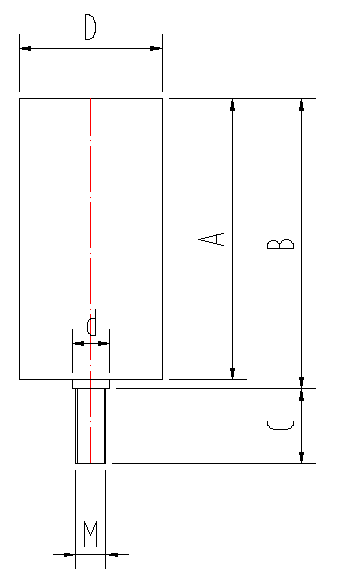 Afrikaans
Afrikaans  Albanian
Albanian  Amharic
Amharic  Arabic
Arabic  Armenian
Armenian  Azerbaijani
Azerbaijani  Basque
Basque  Belarusian
Belarusian  Bengali
Bengali  Bosnian
Bosnian  Bulgarian
Bulgarian  Catalan
Catalan  Cebuano
Cebuano  Corsican
Corsican  Croatian
Croatian  Czech
Czech  Danish
Danish  Dutch
Dutch  English
English  Esperanto
Esperanto  Estonian
Estonian  Finnish
Finnish  French
French  Frisian
Frisian  Galician
Galician  Georgian
Georgian  German
German  Greek
Greek  Gujarati
Gujarati  Haitian Creole
Haitian Creole  hausa
hausa  hawaiian
hawaiian  Hebrew
Hebrew  Hindi
Hindi  Miao
Miao  Hungarian
Hungarian  Icelandic
Icelandic  igbo
igbo  Indonesian
Indonesian  irish
irish  Italian
Italian  Japanese
Japanese  Javanese
Javanese  Kannada
Kannada  kazakh
kazakh  Khmer
Khmer  Rwandese
Rwandese  Korean
Korean  Kurdish
Kurdish  Kyrgyz
Kyrgyz  Lao
Lao  Latin
Latin  Latvian
Latvian  Lithuanian
Lithuanian  Luxembourgish
Luxembourgish  Macedonian
Macedonian  Malgashi
Malgashi  Malay
Malay  Malayalam
Malayalam  Maltese
Maltese  Maori
Maori  Marathi
Marathi  Mongolian
Mongolian  Myanmar
Myanmar  Nepali
Nepali  Norwegian
Norwegian  Norwegian
Norwegian  Occitan
Occitan  Pashto
Pashto  Persian
Persian  Polish
Polish  Portuguese
Portuguese  Punjabi
Punjabi  Romanian
Romanian  Russian
Russian  Samoan
Samoan  Scottish Gaelic
Scottish Gaelic  Serbian
Serbian  Sesotho
Sesotho  Shona
Shona  Sindhi
Sindhi  Sinhala
Sinhala  Slovak
Slovak  Slovenian
Slovenian  Somali
Somali  Spanish
Spanish  Sundanese
Sundanese  Swahili
Swahili  Swedish
Swedish  Tagalog
Tagalog  Tajik
Tajik  Tamil
Tamil  Tatar
Tatar  Telugu
Telugu  Thai
Thai  Turkish
Turkish  Turkmen
Turkmen  Ukrainian
Ukrainian  Urdu
Urdu  Uighur
Uighur  Uzbek
Uzbek  Vietnamese
Vietnamese  Welsh
Welsh  Bantu
Bantu  Yiddish
Yiddish  Yoruba
Yoruba  Zulu
Zulu Understanding the Mechanics and Importance of Head Pulley Systems in Conveyor Operations
Understanding Head Pulleys An Essential Component in Conveyor Systems
Head pulleys play a crucial role in the operation of conveyor systems, which are integral to various industries such as mining, manufacturing, and logistics. These systems are designed to transport materials efficiently from one point to another, and head pulleys are key components that facilitate this movement.
What is a Head Pulley?
A head pulley is situated at the discharge end of a conveyor belt. It is typically a cylindrical drum that serves multiple purposes. Not only does it provide the means to drive the belt, but it also helps in correcting any misalignment that may occur during operation. The head pulley is responsible for maintaining tension on the belt, ensuring that it runs smoothly and efficiently while handling materials.
Functionality and Design
The functionality of head pulleys can vary based on their design and the requirements of the specific conveyor system they are a part of
. Generally, head pulleys can be categorized into two types drive pulleys and tail pulleys. Drive pulleys are located at the head end and are equipped with drive mechanisms, such as electric motors, to facilitate movement. In contrast, tail pulleys are located at the opposite end and primarily serve as support structures.Head pulleys are typically constructed from robust materials, such as steel or rubberized compounds, to withstand the rigors of heavy material handling. The surface of the pulley is often covered with a textured material to enhance grip, preventing the belt from slipping off during operation.
Importance of Head Pulleys in Conveyor Systems
head pulley

1. Material Transportation Efficiency Head pulleys are integral to the efficiency of material transportation. By creating proper tension and alignment, they ensure that the conveyor belt can carry heavy loads without compromising on stability.
2. Preventing Slippage With the right design, head pulleys minimize the risk of belt slippage. This is vital for maintaining steady operations, especially in environments where large loads are being transported.
3. Maintenance and Longevity The design and construction of head pulleys can significantly impact the overall maintenance needs of a conveyor system. Well-designed pulleys reduce wear and tear on the belt, contributing to longer service life and reduced operational costs.
4. Flexibility in Operation Head pulleys can be designed with various modifications, facilitating flexibility in their application. Features such as adjustable tension and the ability to integrate with other components allow industries to customize their conveyor systems to meet specific operational needs.
Challenges and Innovations
While head pulleys serve essential functions, they can encounter challenges such as wear, misalignment, and environmental factors. Over time, debris and materials can accumulate around the pulley, leading to operational inefficiencies. Innovations in design, such as self-cleaning mechanisms and advanced bearings, have been developed to address these issues. Additionally, monitoring technologies, such as sensors that track performance, can provide real-time data, allowing for predictive maintenance.
Conclusion
In conclusion, head pulleys are essential components of conveyor systems, contributing greatly to the efficiency, safety, and effectiveness of material transportation in various industries. Their robust design and functionality underscore their importance in an increasingly automated and fast-paced industrial environment. As technology continues to evolve, so too will the designs and capabilities of head pulleys, ensuring that they remain a vital element in the operational success of conveyor systems worldwide.
-
Revolutionizing Conveyor Reliability with Advanced Rubber Lagging PulleysNewsJul.22,2025
-
Powering Precision and Durability with Expert Manufacturers of Conveyor ComponentsNewsJul.22,2025
-
Optimizing Conveyor Systems with Advanced Conveyor AccessoriesNewsJul.22,2025
-
Maximize Conveyor Efficiency with Quality Conveyor Idler PulleysNewsJul.22,2025
-
Future-Proof Your Conveyor System with High-Performance Polyurethane RollerNewsJul.22,2025
-
Driving Efficiency Forward with Quality Idlers and RollersNewsJul.22,2025





























